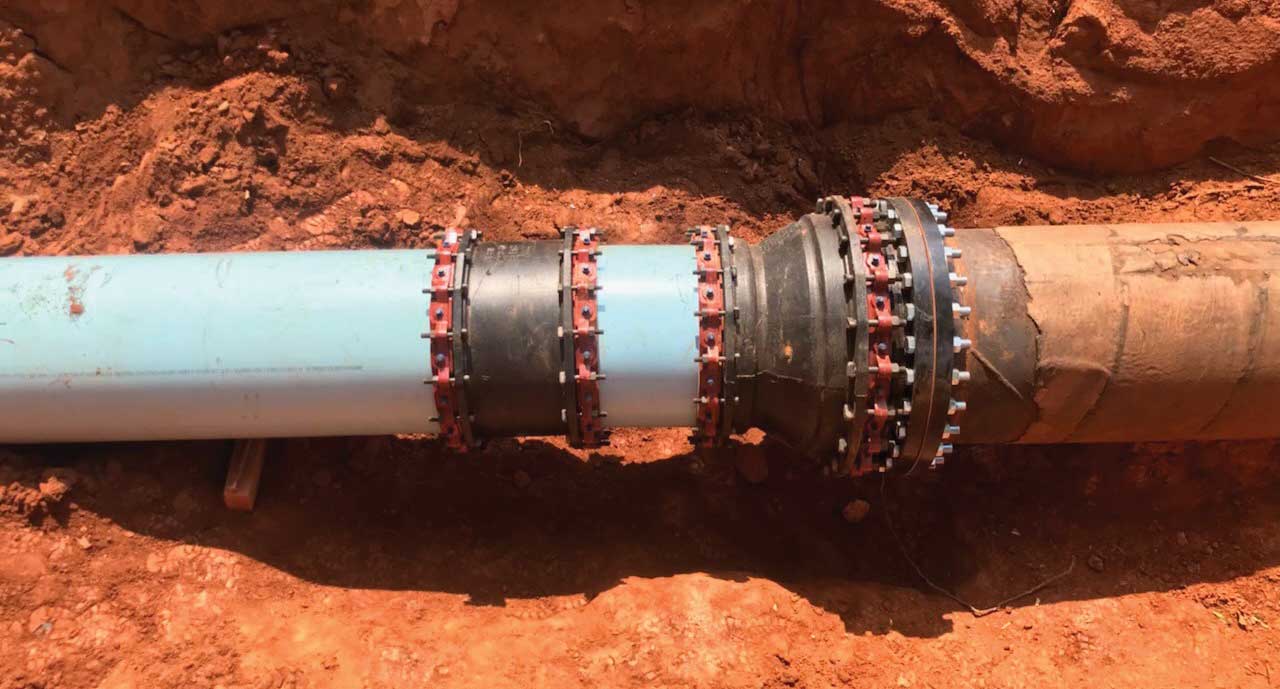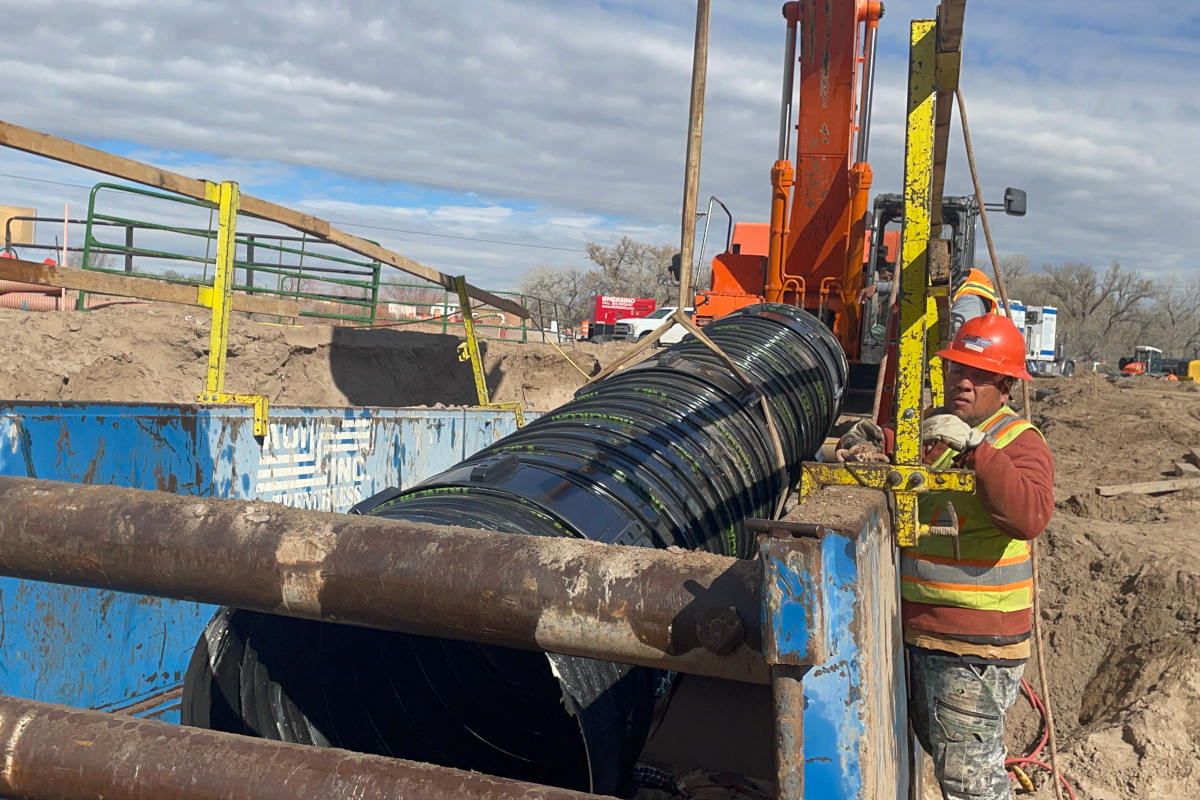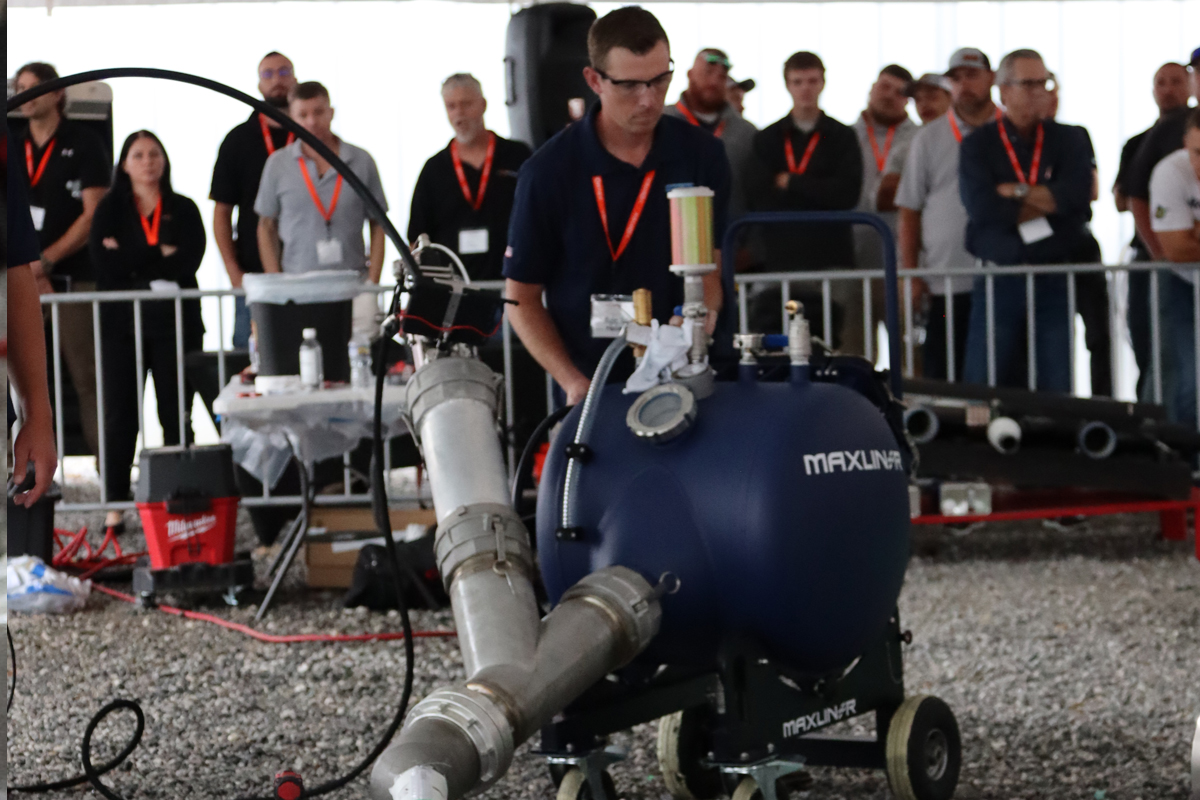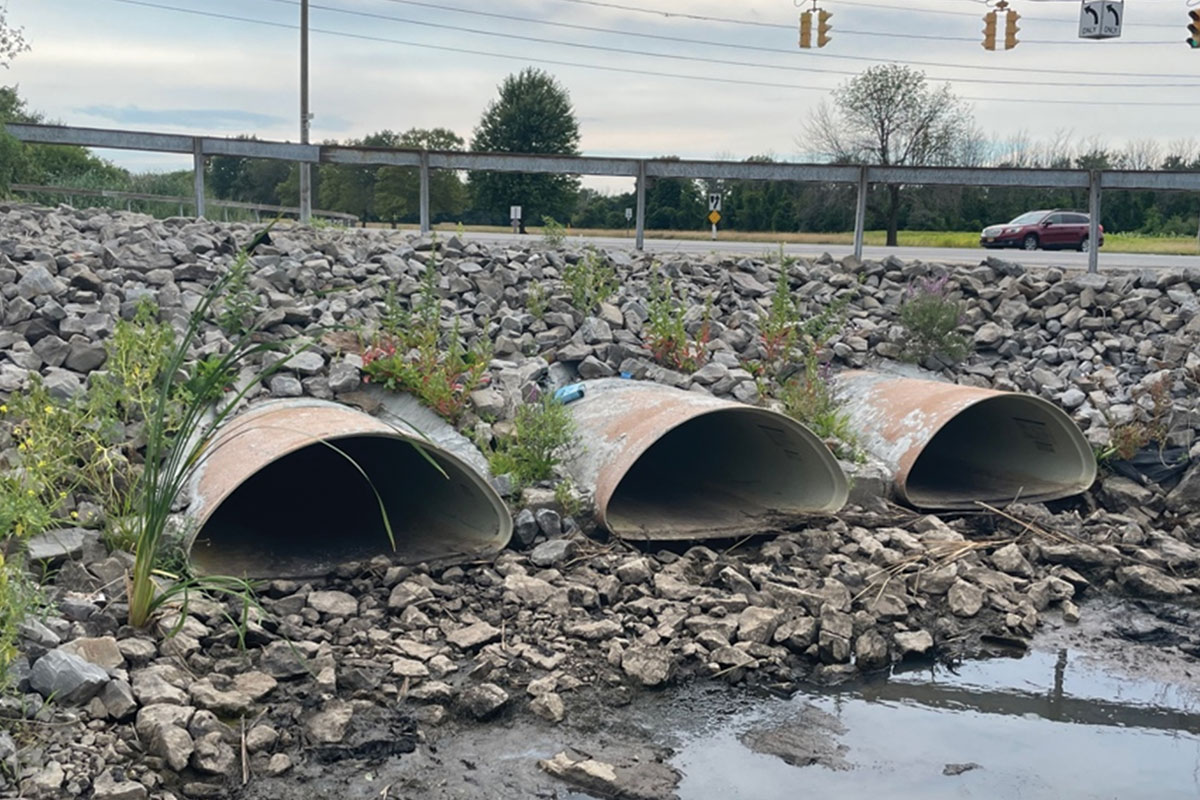
Sliplining in Atlanta: Rehabilitation of a Mid-Century Water Transmission Line
Established in 1822 and located in north-central Georgia, DeKalb County is the fourth most populous county in the state. It has experienced a population boom in the past 10 years, increasing the demand on its existing infrastructure. The DeKalb County Department of Watershed Management (DWM), established in 1942, owns and maintains upward of 5,000 miles of water and wastewater pipe.
In recent years, DeKalb County has been taking a proactive approach to rehabilitating its gravity sewer lines with trenchless technologies and wanted to take that same approach to their pressurized pipes where applicable.
A critical 30-in. steel water transmission main — installed in the 1950s — experienced multiple significant leaks leading to costly repairs in a residential area with conflicting utilities. The county’s engineer consultant, Gresham Smith, estimated approximately 2,000 lf needed rehabilitation or replacement along Katie Kerr Drive. This section crossed multiple side roads, two creeks, continued behind a row of 20 townhouses with large hardwood trees, and ended in a community park. An emergency repair was deemed necessary to prolong the life of this critical asset, increasing water pressure to the service area and resiliency of the potable water system. Due to the challenging alignment, the county decided a trenchless option was needed. Dekalb County moved forward with closed-circuit televising (CCTV) of the pipe to better understand the condition of the host pipe and any possible deflections along the alignment not seen in GIS files. The CCTV presented a challenge when a wooden plug obstructed the continuation of the crawler and was later cut out robotically to continue the CCTV inspection.

The operating pressure of the water main was approximately 100 psi. Still, per Dekalb County specifications, all water mains were to be pressure tested to 200 psi. CIPP was ruled out due to high pressures for a 30-in. test and the longer pull lengths of 1,250 and 900 lf. The Class IV Tite Liner was also ruled out because of the higher-pressure test requirement and the limited area to string the fused pipe at one time. A conventional slipline with HDPE piping had too much restriction in hydraulic flow capacity and concerns as a standalone Class IV solution in a potable water environment. When considering the FRP option, it was determined that the water main was too small for a manned entry or external wrapping with the system offered by Fibrwrap.
The best solution was to slipline the existing steel main with a new 24-in. Fusible PVC pipe, which provided sufficient hydraulic flow capacity. Insituform’s annual contract was utilized for the procurement of the project. Then they teamed up with a local DBE subcontractor to provide all of the excavation and tree removal. Once the preparation work was completed, Insituform used Underground Solutions to fuse the pipe and United Pipeline Systems to slipline, make connections, pressure test, and grout the annular space after the Fusible PVC sliplining pipe was installed.

The inside diameter of the existing 30-in. host pipe provided more than 2 in. of annular space for sliplining with the Fusible PVC piping. Dresser couplings were used every 40 ft on the existing steel pipe to connect and deflect the host pipe during its original installation. The annular space clearance was confirmed by pulling a proof piece, 45-ft in length, before each slipline. The new pipe was pulled into place using an 80-ton static pipe bursting machine provided by TT Technologies. United Pipeline Systems chose a fuse and pull method to install the Fusible PVC piping due to the limited laydown area. This method involved setting back about 150 ft from the host pipe and fusing 45-ft sections of FusiblePVC pipe at a time. After each 45-ft section was fused, the new pipe was subsequently pulled into the host pipe. The longest slipline segment totaled approximately 1,250 lf, and the other section was about 900 lf.

The 24-in. FusiblePVC pipe would be pulled from each end of the project into a center pit where the static pipe burst machine was located. Standard ductile iron fittings and mechanical joint restraints were utilized in the center pit and also to make an 8-in. service connection to a nearby fire hydrant. Following a pressure test at 200 psi, the annular space was grouted. Elastizell Corp. of America provided and installed a low-density cellular grout, which is a highly flowable pumpable mix with low heat of hydration. Water was left inside the Fusible PVC pipe to provide a heat sink and help weigh the pipe down during the curing process. The pipeline would then be pressure tested and disinfected per Dekalb County specs. Following Dekalb County approval, each end of the 30-in. steel water main was tied into the Fusible PVC pipe utilizing welded flange adapters with 30 X 24-in. reducers and mechanical joint restraints.
Insituform, United Pipeline Systems, and Underground Solutions put forth a combined effort in pulling together an Aegion team to successfully rehabilitate the water main and extend the life of the critical potable water transmission main. Working together, the group was able to take an unbiased approach towards assessing the problem and finding the proper rehabilitation solution for DeKalb County.
Chad Andrews, P.E. is regional sales manager at Underground Solutions.




